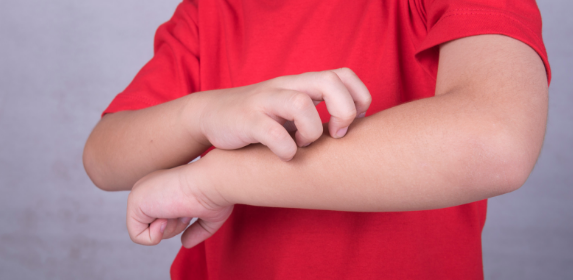(Dennison, Ohio) – In this week’s Healthy Tip Tuesday, Trinity Hosptial Twin City is sharing information on poisonous plants.
Here in Ohio, poison ivy and poison sumac are extremely common and Trinity Hosptial Twin City is educating Newsymom readers on what to look out for!
Types of Exposure
According to the Centers for Disease Control and Prevention, poison ivy, poison oak, and poison sumac release an oil, urushiol, when the leaf or other plant parts are bruised, damaged, or burned. When the oil gets on the skin an allergic reaction, referred to as contact dermatitis, occurs in most exposed people as an itchy red rash with bumps or blisters. When exposed to 50 micrograms of urushiol, an amount that is less than one grain of table salt, 80 to 90 percent of adults will develop a rash. The rash, depending upon where it occurs and how broadly it is spread, may significantly impede or prevent a person from working. Burning these poisonous plants can be very dangerous because the allergens can be inhaled, causing lung irritation.
Workers may become exposed to urushiol through:
- Direct contact with the plant
- Indirect contact, such as touching tools, livestock, or clothing that have urushiol on them
- Inhalation of particles containing urushiol from burning plants
Plant Identification
The old saying “Leaves of three, Let it be!” is a helpful reminder for identifying poison ivy and oak, but not poison sumac which usually has clusters of 7-13 leaves. Even poison ivy and poison oak may have more than three leaves and their form may vary greatly depending upon the exact species encountered, the local environment, and the season. Being able to identify local varieties of these poisonous plants throughout the seasons and differentiating them from common nonpoisonous look-a-likes are the major keys to avoiding exposure.
Poison Ivy

Photos courtesy of U.S. Department of Agriculture
- Eastern poison ivy is typically a hairy, ropelike vine with three shiny green (or red in the fall) leaves budding from one small stem
- Western poison ivy is typically a low shrub with three leaves that does not form a climbing vine
- May have yellow or green flowers and white to green-yellow or amber berries
Poison Oak

Photos courtesy of U.S. Department of Agriculture
- Typically a shrub with leaves of three, similar to poison ivy
- Pacific poison oak may be vine-like
- May have yellow or green flowers and clusters of green-yellow or white berries
Poison Sumac

Photos courtesy of U.S. Department of Agriculture
- Woody shrub that has stems that contain 7-13 leaves arranged in pairs
- May have glossy, pale yellow, or cream-colored berries
Symptoms
Signs or symptoms associated with dermal contact with poisonous plants may include:
- Red rash within a few days of contact
- Possible bumps, patches, streaking, or weeping blisters (blister fluids are not contagious)
- Swelling
- Itching
First Aid
Workers who have come in contact with poisonous plants should:
- Immediately rinse skin with rubbing alcohol, specialized poison plant washes, degreasing soap (such as dishwashing soap) or detergent, and lots of water.
- Rinse frequently so that wash solutions do not dry on the skin and further spread the urushiol.
- Scrub under nails with a brush.
- Apply wet compresses, calamine lotion, or hydrocortisone cream to the skin to reduce itching and blistering.
- Follow the directions on any creams and lotions. Do not apply to broken skin, such as open blisters.
- Oatmeal baths may relieve itching.
- An antihistamine such as diphenhydramine (Benadryl) can be taken to help relieve itching.
- Follow directions on the package.
- Drowsiness may occur.
- If children come in contact with work clothing contaminated with urushiol, a pediatrician should be contacted to determine appropriate dosage.
- In severe cases or if the rash is on the face or genitals, seek professional medical attention.
- Call 911 or go to a hospital emergency room if the worker is suffering a severe allergic reaction, such as swelling or difficulty breathing, or has had a severe reaction in the past.
Additional Resources
Introduced, Invasive, and Noxious PlantsExternal
Occupational Safety and Health Administration – Sawmills eTool: Poisonous PlantsExternal
Food and Drug Administration: Outsmarting Poison Ivy and Its CousinsExternal
American Academy of Dermatology: Poison Ivy, Oak, and SumacExternal
Poison Ivy, Oak, and Sumac Information CenterExternal
Poison Oak: More Than Just Scratching the SurfaceExternal
Healthy Tip Tuesday is brought to you by Trinity Hosptial Twin City and is designed to educate the public on a variety of health-related topics and resources.



